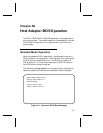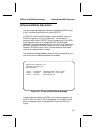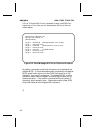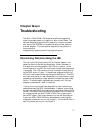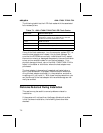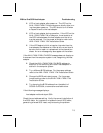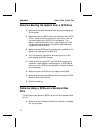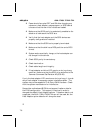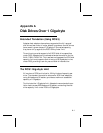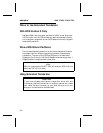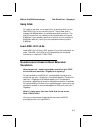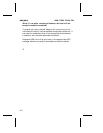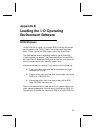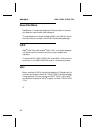
• Make sure that the SCSI drive to be used as drive D is set
to SCSI ID 0:0. Check the drive manual for information
on setting the SCSI ID for that device. The Return In-
stalled Devices utility in the Onboard utilities can also be
used to determine the SCSI addresses of peripherals on
the SCSI bus.
• Make sure that SCSI parity is consistently enabled or dis-
abled on all devices on the SCSI bus.
• Verify that the host adapter and the SCSI devices are
properly configured and installed.
• Power should be cycled OFF and ON after changing any
values on a host adapter,
setup
program, or SCSI device
to be sure that the new initial values are loaded.
• Make sure that the SCSI bus is properly terminated.
• Make sure that the disk has a DOS partition and a DOS
format.
• Check the cabling.
Problems Using Two SCSI Drives
The drives are configured as SCSI disk drive D and SCSI disk
drive C.
• Make sure that both standard fixed disks are mapped out
of the system with the
setup
program.
• Make sure that the SCSI drive to be used as drive D is set
to SCSI ID 0:1 or 1:0. Check the drive manual for infor-
mation on setting the SCSI ID for that device. The
Return Installed Devices utility in the Onboard utilities
can also be used to determine the SCSI addresses of pe-
ripherals on the SCSI bus.
EISA-to-Fast SCSI Host Adapter Troubleshooting
7-5



